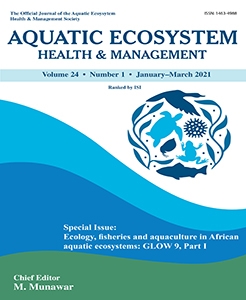Lakes, rivers and oceans provide unique resources and support fisheries and aquaculture worldwide. The fisheries and aquaculture sector of Kenya contributes approximately 0.8% to the country's GDP. Marine production is about 9 000 tonnes per year. Marine finfish form the bulk of the marine production, while shellfish (e.g. prawns, lobsters and crabs), molluscs (e.g. octopi and squids) are underexploited. The Fishery sector has the potential of about USD 5 billion for the Blue Economy in Kenya. Crab fishery in Kenya is active in some areas of the south and north coast. The crab resources along the Kenyan waters are diverse and a variety of species are edible. The most commonly fished crab by artisanal fishers is the Mangrove Mud Crab Scylla serrata. Semi-commercial and industrial fishers usually have portunid and other deep sea crabs as by-catch in trawl and longline fisheries, which in many cases are unutilized. Exports of live crabs have increased over the years, with exports mainly to Asian countries. Export of frozen crabs started recently. The need to sustainably utilize lake, river and ocean resources is recognized and important in promoting Blue Economy. Sustainable development of crab fishery provides a potential area for the Blue Economy development in Kenya. Research is essential to crab fishery development.
How to translate text using browser tools
12 July 2021
Sustainable crab fishery for Blue Economy in Kenya
Esther N. Fondo,
Benrick Ogutu
ACCESS THE FULL ARTICLE
crab production
deep sea crabs
Scylla serrata
shallow water crabs





